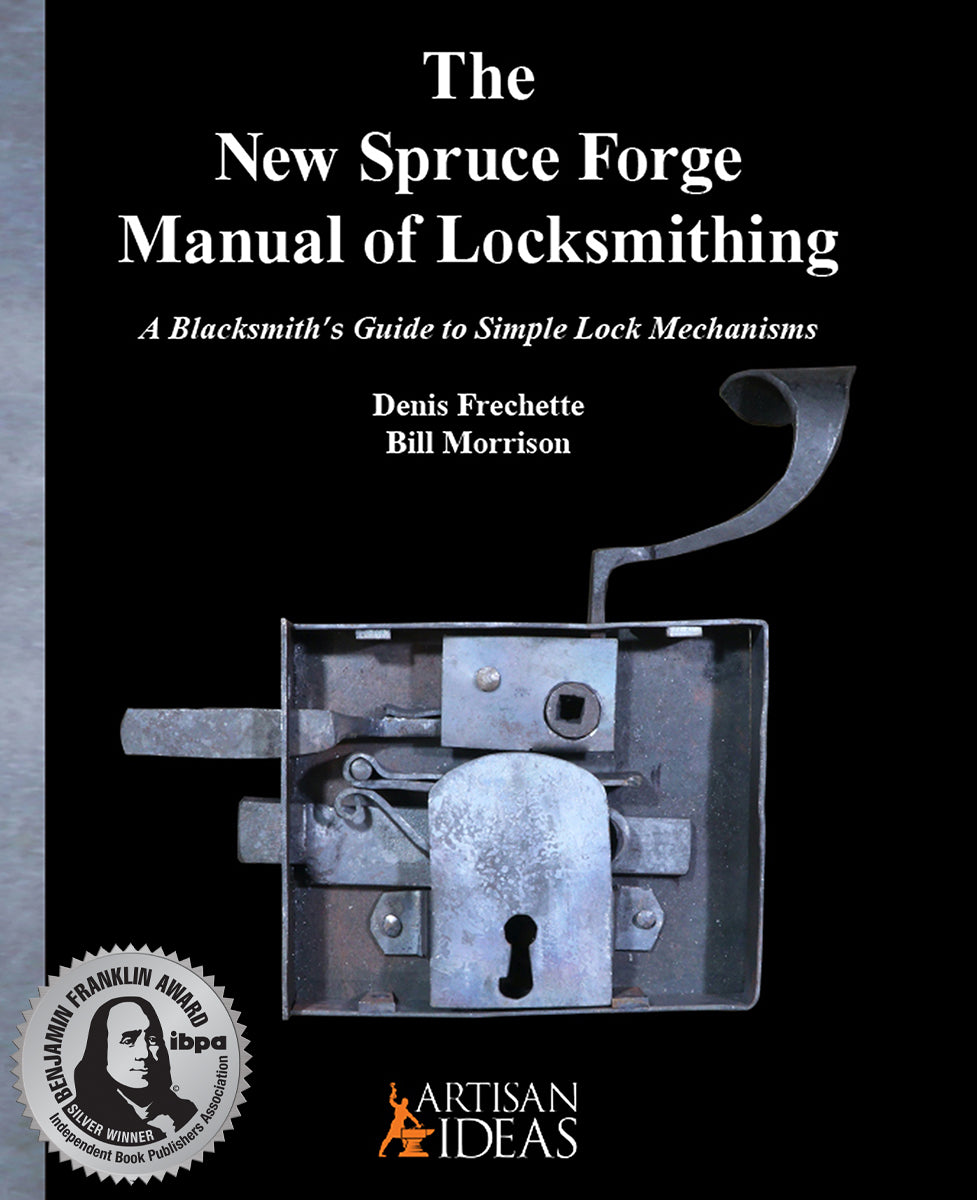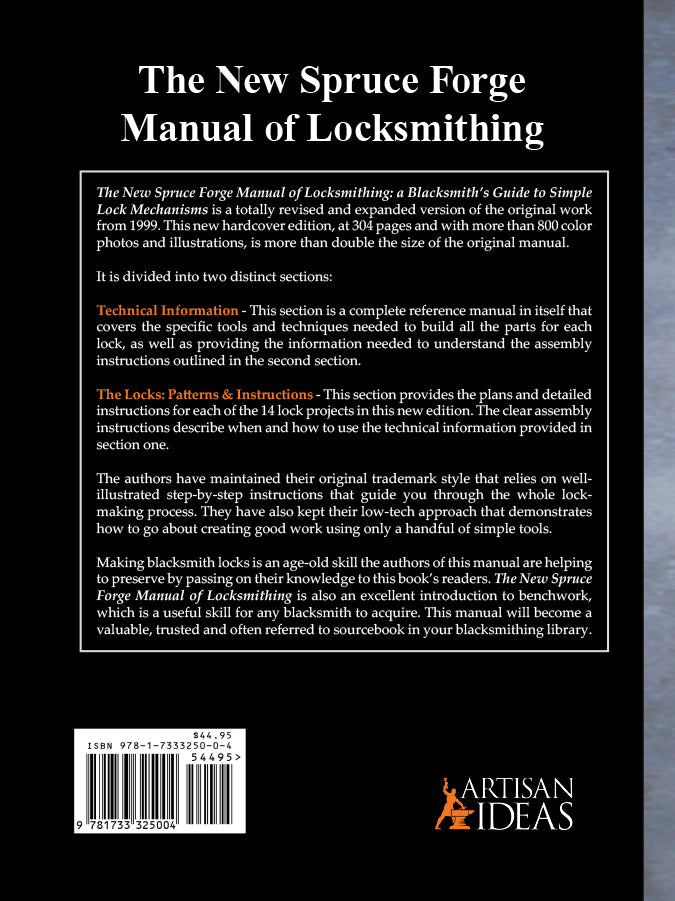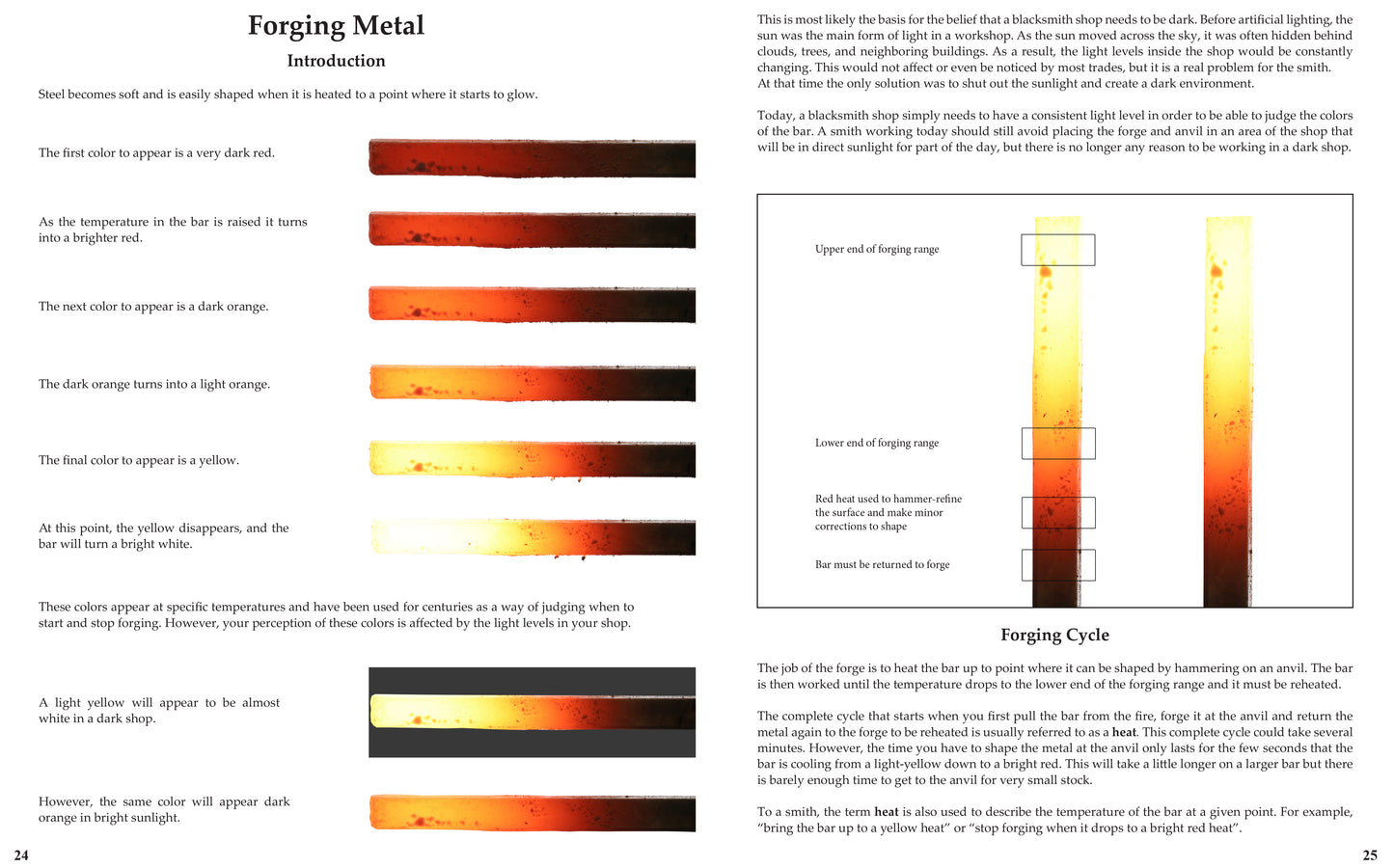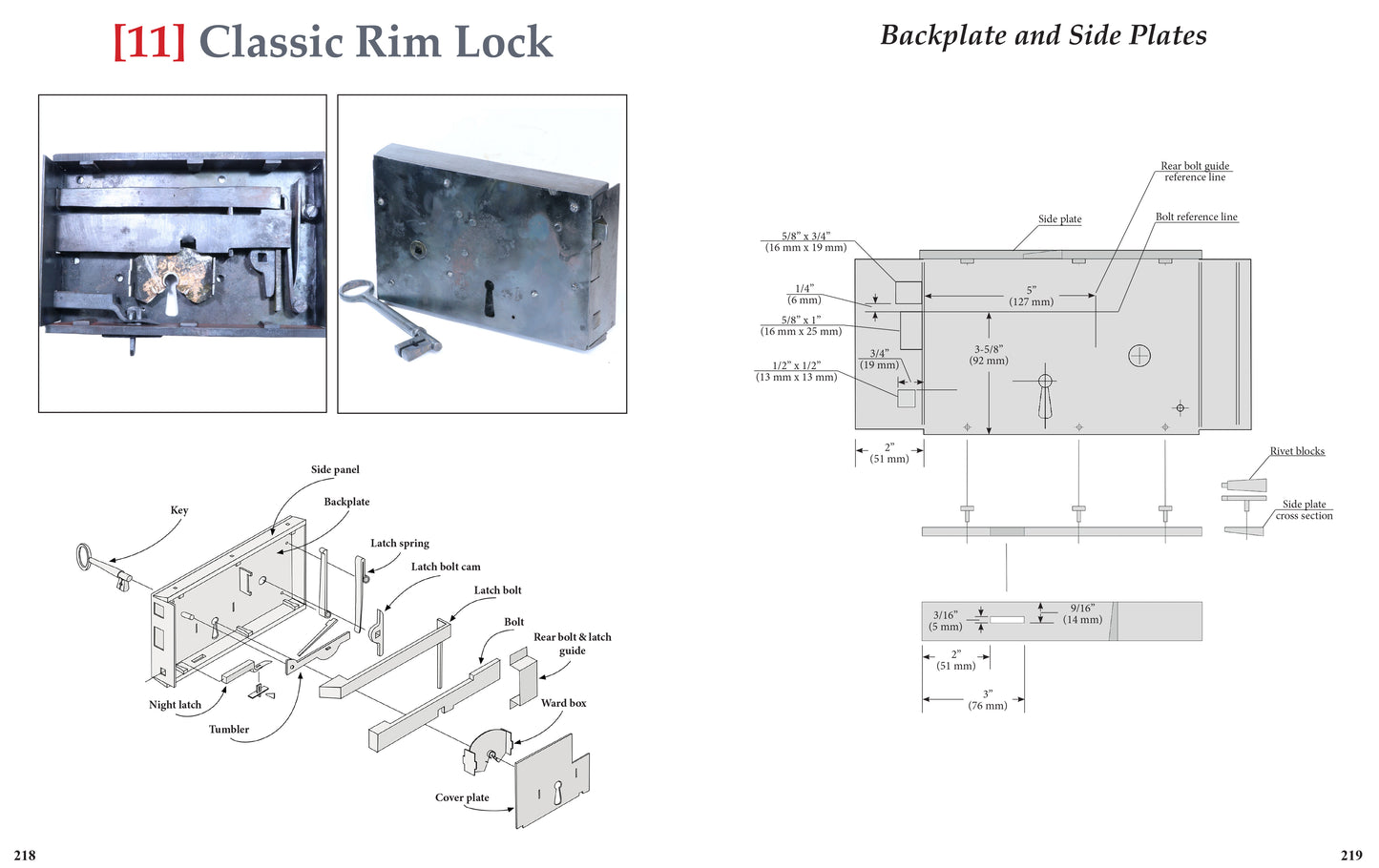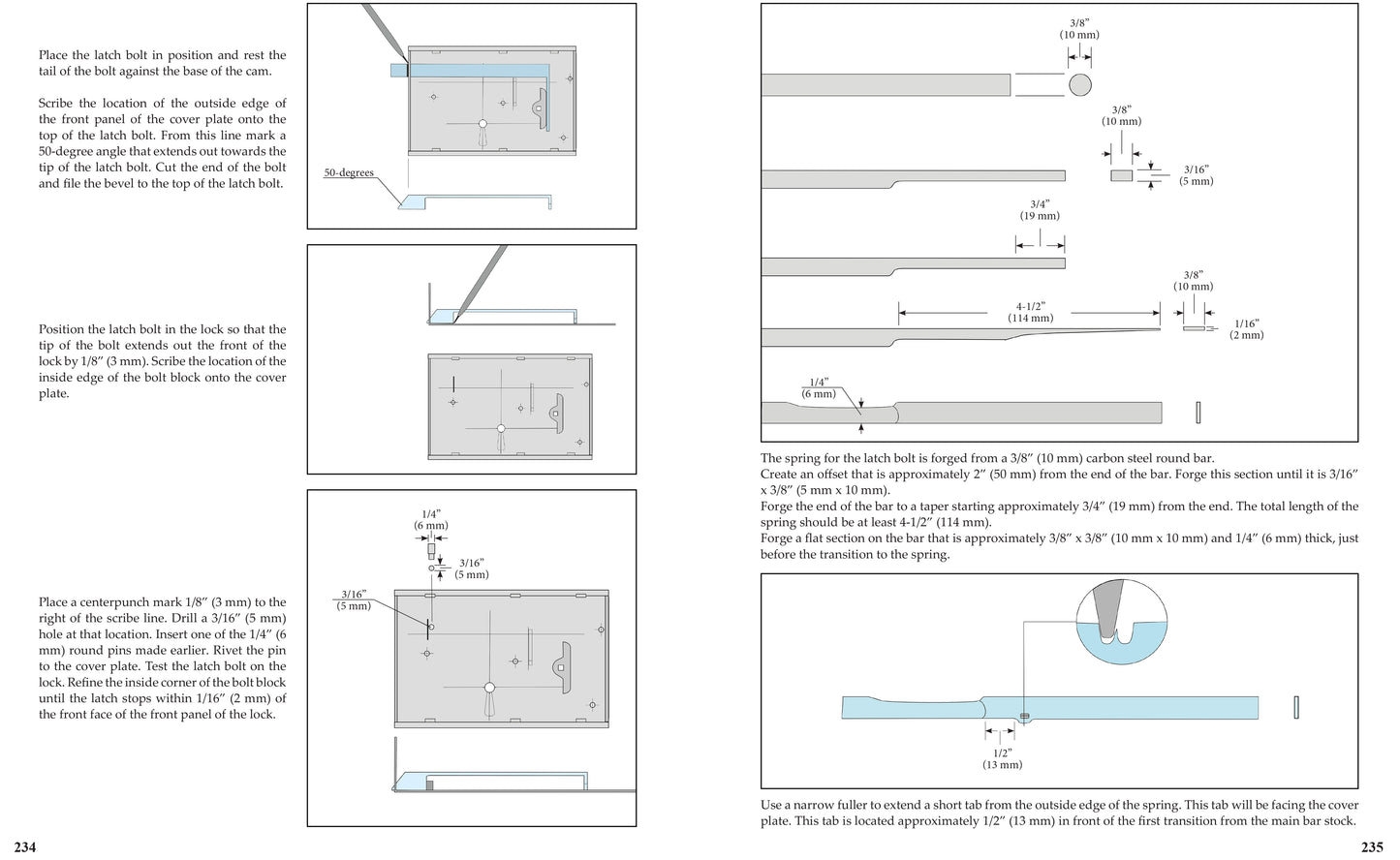The New Spruce Forge Manual of Locksmithing
The New Spruce Forge Manual of Locksmithing
Couldn't load pickup availability
View full details
Runner-Up for the best HOBBY and CRAFT BOOK 2023, IBPA Book Awards.
The New Spruce Forge Manual of Locksmithing: A Blacksmith’s Guide to Simple Lock Mechanisms is a totally revised and expanded version of the original work from 1999. This new hardcover edition, at 304 pages and with more than 800 color photos and illustrations, is more than double the size of the original manual.
This book will have great appeal to anyone who has blacksmithing as a hobby or as a profession, to those who repair antique doors, furniture or who make period style furniture, those involved in historical architectural restoration, and also to everyone who has any interest in antique keys, locks and their mechanical mechanisms.
The book is divided into two distinct sections:
Technical Information - This section is a reference manual in itself that covers the specific tools and techniques needed to build all the parts for each lock, as well as providing the information needed to understand the assembly instructions outlined in the second section.
The Locks: Patterns & Instructions - This section provides the plans and detailed instructions for each of the 14 lock projects in this new edition. The clear assembly instructions describe when and how to use the technical information provided in section one.
The authors have maintained their original trademark style that relies on well-illustrated step-by-step instructions that guide you through the whole lock-making process. They have also kept their low-tech approach that demonstrates how to go about creating good work using only a handful of simple tools.
Making blacksmith locks is an age-old skill the authors of this manual are helping to preserve by passing on their knowledge to this book’s readers. The New Spruce Forge Manual of Locksmithing is also an excellent introduction to benchwork, which is a useful skill for any blacksmith to acquire. This manual will become a valuable, trusted and often referred to sourcebook in your blacksmithing library.
Denis Frechette has spent his entire adult life working with hand tools. He started woodworking at an early age, set up his first forge in 1979, studied pottery in college and worked for several years as a professional craftsman. In 2005 he began producing videos documenting his approach to early technology. In 2008 he transfered his collection of videos from his website to YouTube. As of 2021 his channel - DF InTheShop - has a library of over 300 instructional videos that have given many people the confidence to pursue blacksmithing.
William Morrison’s interest in blacksmithing began over 40 years ago, about the same time he was beginning his career as an art instructor. He received his Bachelor of Arts from Eastern Michigan University in 1970. William developed and taught both a blacksmithing course, offered at the high school level, as well as a week-long summer blacksmithing camp at Michigan Tech University for its Summer Youth Program. His blacksmithing experience includes working summers on Mackinac Island, both demonstrating in the Island Blacksmith Shop making period pieces, and participating in specific projects such as the Fort’s weathervane, gates and railings, and consulting work in the restoration of locks from the 1700s. William currently owns and operates Spruce Forge in Sault Ste. Marie, Michigan, where he designs custom ironwork—everything from kitchen utensils to gates.
Prizes
- IBPA Benjamin Franklin AwardRunner-up 2023
Review text
“The book offers a good entry into locksmithing. The basics are well covered so that even a beginning blacksmith can start working on the projects. The book is also a valuable reference for smiths repairing locks. By now I have had the opportunity to repair a couple of locks for customers. This would have been a bit easier if I had read this book beforehand.
For me, the book was an inspiring read, which I recommend to every smith interested in locksmithing.“
Review text
"At first I was hesitant to review this book. My preconceived notion was that locksmithing is a pretty narrow topic. I was also concerned the tasks would require greater precision than I would be capable of. After reading the book I feel that it has much broader appeal than I had expected.
The tools, techniques and processes section is quite helpful as it covers a number of topics not often seen in general blacksmithing books. A good amount of locksmithing entails cold work. This book goes into very good detail about creating desired shapes with cold chisels, engraving chisels, files and hacksaws. This is helpful in many different projects.
The book contains 14 separate lock projects. Each project is illustrated with dimensioned layouts and patterns as well as photographs and written instructions. The instructions are easy to follow. They also include instructions on making gauge blocks to control critical dimensions of various lock parts.
The book is well organized and easy to follow. The processes are presented in a way that an intermediate blacksmith should be able to complete any project while increasing their skill level. The section on tools and techniques is applicable beyond locksmithing and provides information not covered in many basic blacksmithing books."
Review text
“The first 65 of the 300 pages are devoted to Tools, Techniques, and Procedures. It covers basic forging skills, necessary tooling, how to make the tooling, creating patterns, and just about everything you will need to know to create the locks in this book. There is a lot of cold work in making locks. This book goes in detail about how to use chisels, fullers, hack saws, and files. It also covers cold bending, broaching, riveting, and tenons.
When I first received the book there was one lock I wanted to make. Now that I have gone over it a few more times I am up to 5 that I want to make when time permits. The instructions are easy to follow, mastering the skills will take a little longer. The fully dimensioned drawings and patterns will help with getting things right. There are a lot of techniques in this book that will transfer to other blacksmithing. But that is the point of the book.”
Review text
“This new edition is greatly expanded and is an excellent resource.
I have not made a lock before other than a sliding bolt type. With this book I believe I could attempt a more advance lock and succeed. The book is divided into Technical Information and Lock Patterns and Instructions.
For anyone new to blacksmithing this first section alone would be very helpful (for) understanding the basics. Even the more experienced smith can benefit from this stepping-stone to locksmithing. There’s 300 pages of information (in this book) that would make a great addition to any library.”
